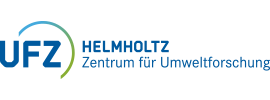Details zur Publikation |
| Kategorie | Textpublikation |
| Referenztyp | Buchkapitel |
| DOI | 10.1007/978-90-481-3509-7_12 |
| Titel (primär) | Transport and fate of xenobiotics in the urban water cycle: studies in Halle/Saale and Leipzig (Germany) |
| Titel (sekundär) | Xenobiotics in the urban water cycle: mass flows, environmental processes and mitigation strategies |
| Autor | Schirmer, M.; Reinstorf, F.; Leschik, S.; Musolff, A.; Krieg, R.; Osenbrück, K.; Martien, M.; Schirmer, K.; Strauch, G. |
| Herausgeber | Fatta-Kassinos, D.; Bester, K.; Kümmerer, K. |
| Quelle | Environmental Pollution |
| Erscheinungsjahr | 2010 |
| Department | ZELLTOX; HDG; CATHYD |
| Band/Volume | 16 |
| Seite von | 213 |
| Seite bis | 226 |
| Sprache | englisch |
| Abstract | This chapter on urban water in large population centres like Halle/Saale and
Leipzig (Germany) focuses on the source, distribution and transport behaviour of
xenobiotics as indicator substances for anthropogenic impacts on urban water
systems. |
| dauerhafte UFZ-Verlinkung | https://www.ufz.de/index.php?en=20939&ufzPublicationIdentifier=12893 |
| Schirmer, M., Reinstorf, F., Leschik, S., Musolff, A., Krieg, R., Osenbrück, K., Martien, M., Schirmer, K., Strauch, G. (2010): Transport and fate of xenobiotics in the urban water cycle: studies in Halle/Saale and Leipzig (Germany) In: Fatta-Kassinos, D., Bester, K., Kümmerer, K. (eds.) Xenobiotics in the urban water cycle: mass flows, environmental processes and mitigation strategies Environ. Pollut. 16 Springer, Heidelberg, p. 213 - 226 10.1007/978-90-481-3509-7_12 |
|
